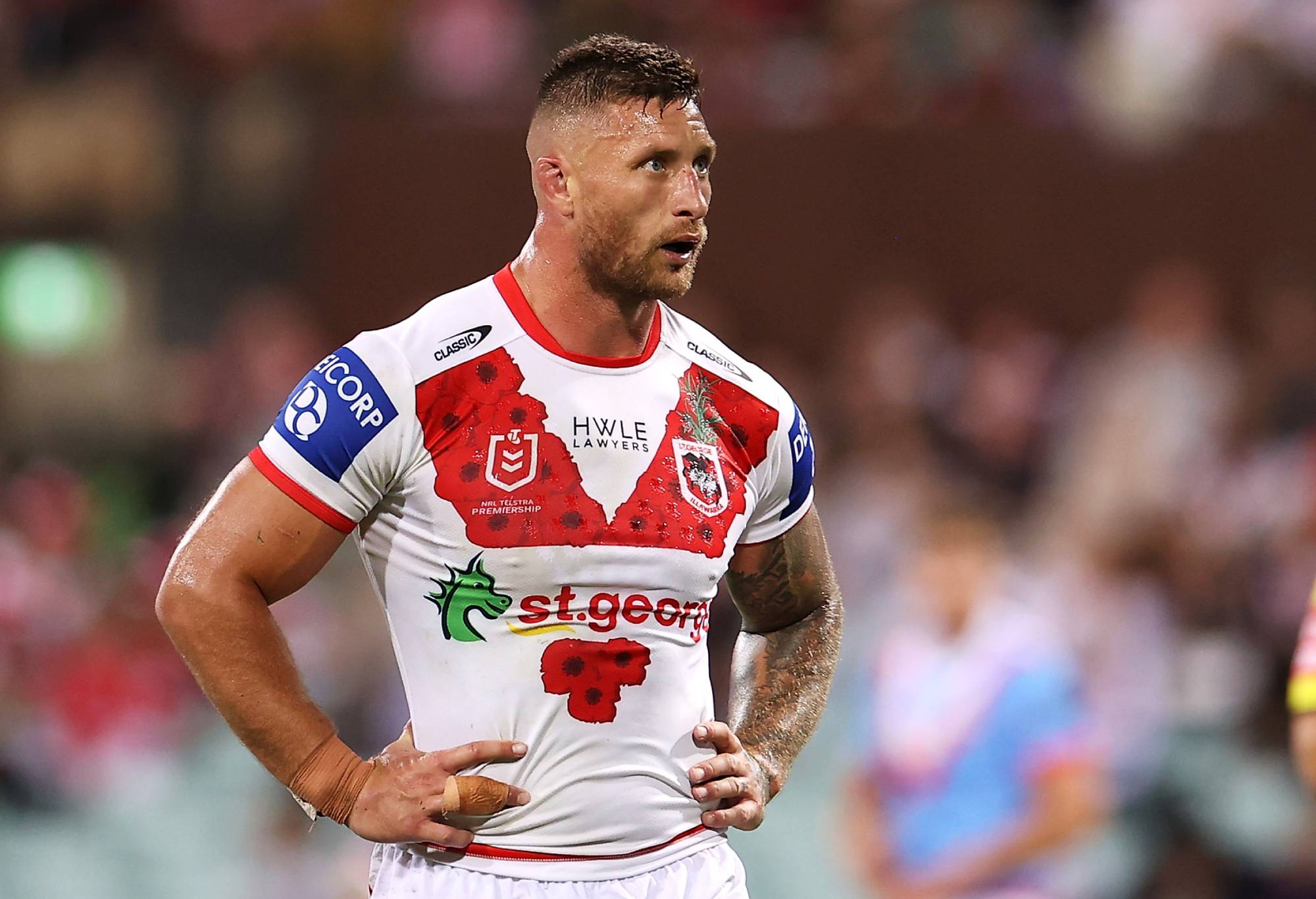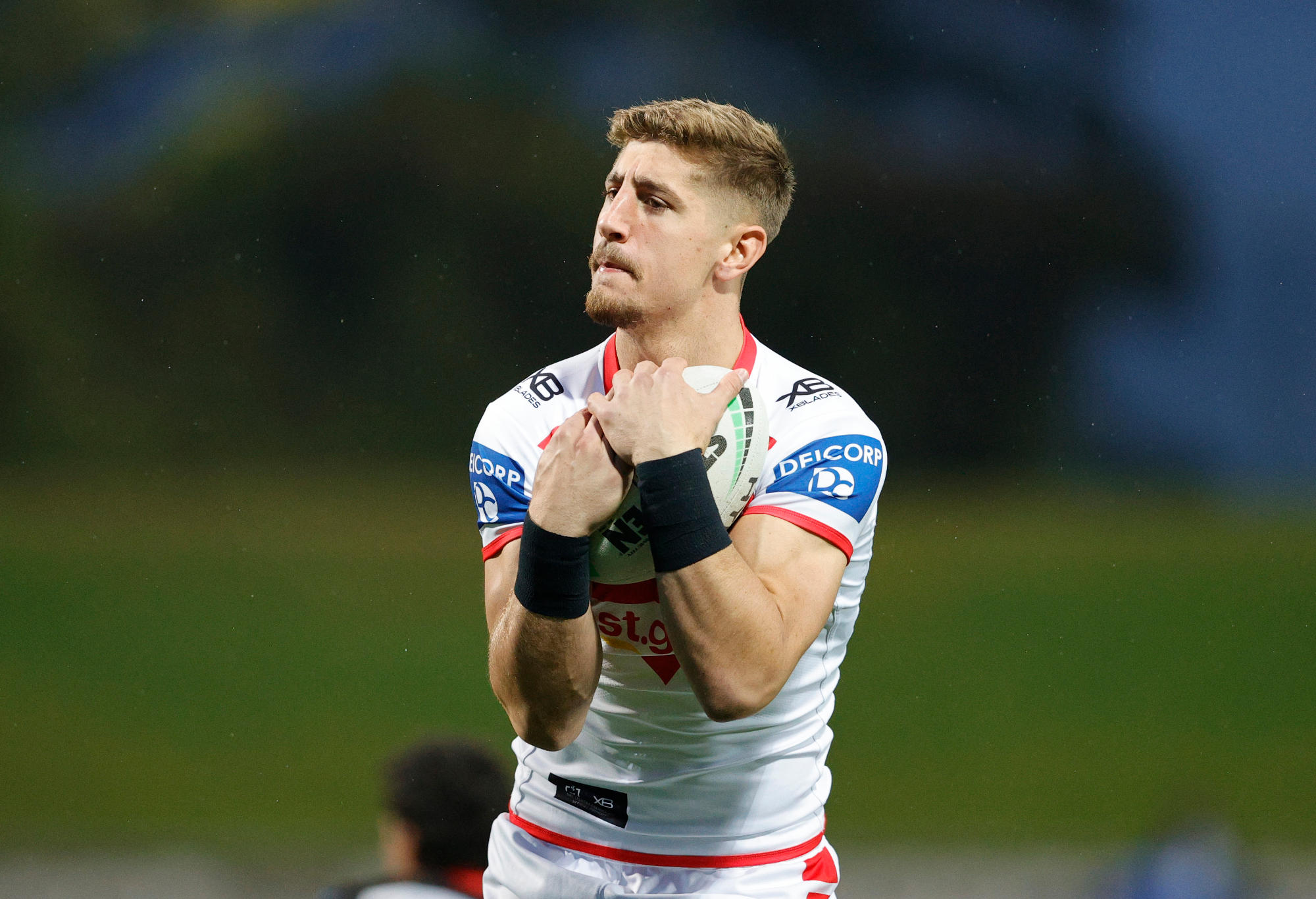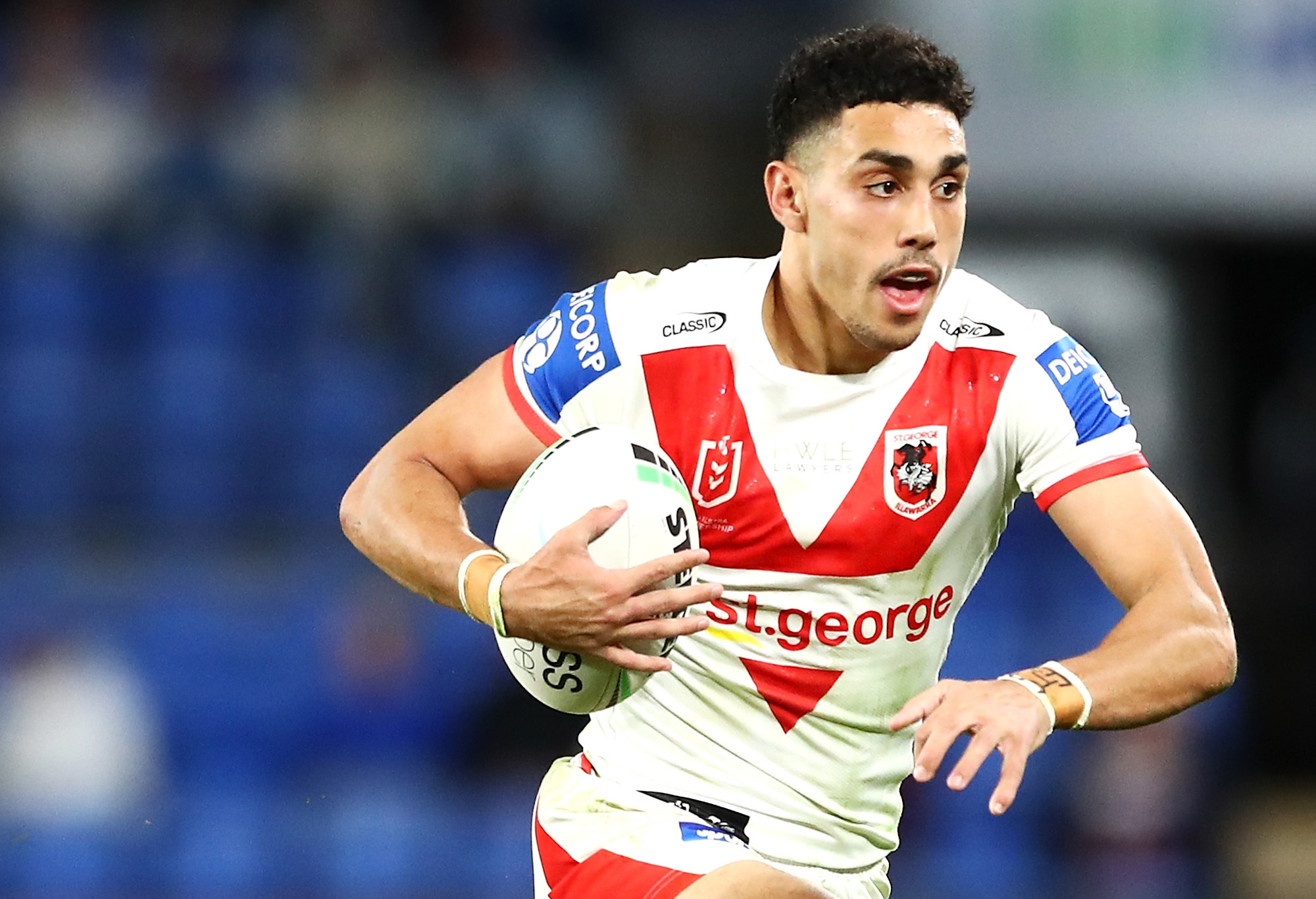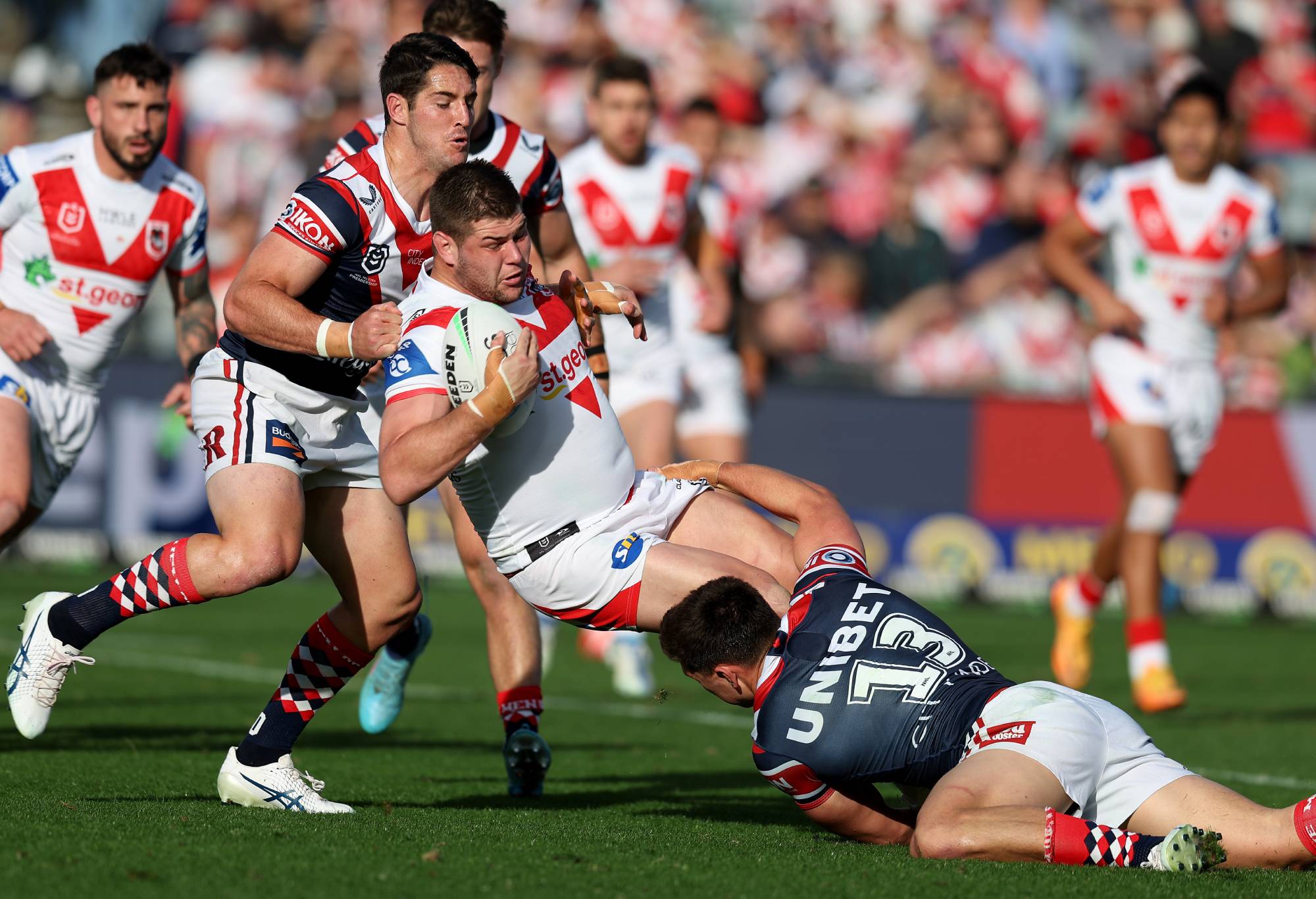You will, doubtless, have seen St George Illawarra are having the big think about their coach, Anthony Griffin.
It’s as yet unknown whether that will lead to anything more than the dreaded vote of confidence, but it shows a level of self-awareness that has been absent at the club for a while. They appear to have noticed it isn’t going that well.
‘Hook’ has been in charge since the start of last year, and it’s hard to see what he has done to change anything.
The team hasn’t made the finals since 2018 under Paul McGregor, whose tenure ended at the start of August 2020, and despite theoretical increases in playing strength through the additions of Josh McGuire, Andrew McCullough and Jack Bird – plus the return of Jack de Belin, the return has been roughly the same.
The pattern for 2022 has been much like 2021: they’re not the worst team in the league, so they pick up some points in unconvincing fashion, but they’re far from the best, so any decent team that even half shows up will likely dispose of them with relative ease.
That’s a problem, because Griffin is a results guy. His team play dreadful, dreadful football to watch and unless you’re winning, most fans won’t stomach that for long.
There’s two ways to lose football matches or a long period and stay in a job. Either you play entertaining footy that keeps fans excited and engaged, or you’re losing because you’re blooding young players and the fans believe that the team is going somewhere.
Now, the Dragons are horrific to watch and they’re playing old guys. In fact, they’re playing old guys at the expense of young guys.

Anthony Griffin. (Photo by Ian Hitchcock/Getty Images)
We can split the Griffin tenure into these two parts: the tedium on the field and lack of cohesive thinking off it.
First, their performances. All bad teams are bad in their own way, and the Dragons brand is based around qualitative success, based on a certain few players showing up and making things happen.
This is fairly big deal and warrants explanation. In general in football codes, you can gain an advantage one of two ways: qualitatively, in that your guys are better than their guys in a certain area; and quantitively, where there are more of your guys in one area than the other team.
In rugby league terms, think of that as trying to create numerical advantages or trying to isolate players. Neither is the right or wrong answer, but qualitative tends to back individuals whereas quantitative tends to back the system.
Penrith and Cronulla might be the best examples of a quantitative attacking system: they excel in fast ball movement, catch-pass and playing to corners where, invariably, their wingers and centres pick up tries.
There’s many ways to skin this cat – Penrith use middle service through a ball-playing lock, the Sharks use men in motion and agile forwards – but you get the point.
On the other side, you might look at the Roosters and Broncos as good examples. Think of Joey Manu or Kotoni Staggs isolating their opponent and batting them out of the way, Sitili Tupouniua running a crash line over a halfback or the way that Joseph Suaalii and Selwyn Cobbo can climb highest to field kicks. These are all qualitative advantage plays.

Dragons forward Tariq Sims. (Photo by Mark Kolbe/Getty Images)
This is all highly generalised, of course, but you get the picture. The Dragons are unequivocally a qualitative team. They try to complete high out of their end, move into position and then get their guy against the other team’s guy.
That might look like Zac Lomax taking on a centre and flicking the ball to his winger, Ben Hunt creating something from nothing or a forward barging over from close in. Frequently it looks like nothing at all, because the Dragons aren’t very good, but that is at least the theory.
Griffin is quite intent on this. His press conferences, by far, mention completion rates the most of any NRL coach, and the team plays like it.
Completion rates, as regular readers of my columns will know, are right up there with the VB Hard Earned Index in terms of useless stats, but Griffin has an obsession with them. He’s the last of the block, block, kick merchants out there, with forwards having zero licence to do anything that might surprise the opposition.
I tweeted a stat that did the rounds a few weeks ago about Tariq Sims having not thrown a pass all year, and while many people did get in touch to tell me he had actually thrown a few – different stats providers had different numbers – the point still stood.
The Dragons are second last for offloads – behind only the Warriors – and well below average for passing in the forwards.
A decent NRL prop or back-rower averages at least four or five per game, but Aaron Woods has three, Jaydn Su’A has two and everyone else is one or fewer aside from Jack Bird, whose stats are padded by having played at five-eighth. De Belin is among the least ball-playing of locks in the comp.
This isn’t to say that the Dragons don’t pass, but crucially, it’s about who is doing the passing and when. They do throw the ball around, but it’s generally in a highly predictable manner.
Hunt is the key player, and by a distance. He’s up at 68 possessions per game – second most in the comp – while his partner, currently Junior Amone, is down in the bottom 25% for five-eighths.
You can throw the centres in here too. The qualitative system, when it works, is meant to feed Moses Suli and Lomax, the former of whom is a massively destructive runner while the latter possesses both silky hands and a strong carry.

(Photo by Mark Evans/Getty Images)
Both, however, get the ball far less frequently than comparable centres, meaning that when they do get it, they are often compelled to do something more drastic with it, which compounds into errors and you get the rest. Lomax the worst in the league for errors among players who don’t regularly field kicks.
There’s also a telling stat that the Dragons get 17 line engagements per game, but Hunt is well over half of them on his own. He also talks all the kicks and creates all the midfield play. Amone, who is not at all a bad player, barely gets a sniff.
St George Illawarra take the fewest attacking kicks and force the fewest dropouts, which I would put down in a large part to the ease of pressuring the kick when you know who the kick will always be.
I could bring you all the stats in the world here but you only had to watch the first half against the Roosters on Saturday afternoon to understand what I mean.
Qualitative attacking plans fail when you don’t have multiple areas in which you can isolate opponents, and teams have worked out that if you stop Hunt, you stop the Dragons.

Tyrell Sloan of the Dragons. (Photo by Chris Hyde/Getty Images)
It isn’t just their attacking system either. Missed tackles are also generally a quite useless stat, but they tell a story here when combined with the one-on-one tackles and effective tackles data, all of which the Dragons are top or close to the top of. The three together give an insight into what Griffin is trying to do defensively.
It’s a man-on-man approach rather than a system or slide. Where some teams would go up and in, or up and across, the Dragons man up.
Again, there’s nothing much wrong with that approach in principle, but it only works if you’re good at it. Topping the line breaks against chart would suggest that St George Illawarra are not good at it.
Griffin’s reluctance to field young players who can be suspect defensively might play into this. He likes the guys he can trust to make tackles because the system can’t cover poor defenders.
The Dragons can’t carry a Daly Cherry-Evans or a Scott Drinkwater – big attacking upside, horrendous defenders – because they’ll get found out.
That’s the on-field issues. The good news, potentially at least, is that the Dragons could change things off the park for the better.
I’m not saying they should punt Griffin – well, I am, but it’s beside the point here – but whoever they get, they need to rethink the ultimate aim. Teams should either be in a premiership window, working towards one or coming out of one. None of these labels apply to the Dragons.
The approach taken by St George Illawarra under Hook has been compared to Moneyball, largely by people who have never read the book, Moneyball.
The idea pioneered by Billy Beane at the Oakland Athletics in the early 2000s was about finding market inefficiencies and looking where others weren’t for value.
In rugby league terms, you might compare it to the 2019 Canberra Raiders, who picked up players from the Super League, or the Melbourne Storm, taking guys from Q Cup and finding an effective role for them inside a wider rubric through having a strategy that was filled with ‘plug and play’ roles.
You wouldn’t compare it to buying older blokes on the cheap because they were available. You certainly wouldn’t use it to describe a club that had a winning junior cohort but never gave them a run.
There’s been plenty said about the inability to Griffin to integrate the key stars of the 2019 Illawarra Steelers SG Ball side into first grade. I see enough of their second grade team to tell you that there are clear defensive issues with a few of them, particularly Tyrell Sloan.
He is a good case in point. Sloan has made nine first grade appearances: five last year, four this year. But of those appearances, they have often been in one week, out the next: he played rounds 15, 18 and 20 in 2021 before returning to finish the year in garbage time in rounds 24 and 25.
This year he started the year and got the first three weeks before being ditched for Moses Mbye at fullback and latterly Cody Ramsey, then coming back for round 10. Ramsey has held the 1 jersey since round 11 of this year and appears to now be the long term option, thought I remain unconvinced.
Sloan is among the best in NSW Cup for tries, line breaks, line break assists and supports, suggesting that the all-round attacking game is there.

(Photo by Scott Gardiner/Getty Images)
Jayden Sullivan posted similarly strong numbers – and, from my own eye test, performances – and got the call-up, but is playing out of position at hooker.
The trick to junior development, particularly with spine players, is that you have to expose them to first grade at some point and hope that they swim rather than sink. There’s no substitute for experience.
If you look at the most successful young playmakers of the last two years – since Covid halted junior footy – you’ll find Sam Walker, Ezra Mam, Lachlan Ilias, Reece Walsh and Xavier Savage, all of whom are right up there for defensive issues on their 2022 stats.
That isn’t to say that they are necessarily bad defenders, but they have, initially at least, struggled at times. It’s totally understandable that they will because the bodies are bigger, the speed is faster and the standard, obviously, higher. Very few come into top grade as elite defenders, even those that go on to be solid without the ball.
This is where Griffin’s on-field issues and off-field issues come together. The Dragons do have the chance to achieve one of the two things that would keep fans on side as they lost games.
If you look at the team as it is, it’s hard to see what the plan is long-term. There’s lots of blokes scraping by, getting a wage, going nowhere. When they were winning more that mattered less, but now they’re not, fans will start to question what the point of it all is.
If we take it as read that Hook is unlikely to change his tack on the field, he could integrate juniors and give the impression that the team is going somewhere.
For that to happen, they would have to either accept short-term pain in defence, or alternatively, work out a defensive system that better hid poorer tacklers. Neither of these things seem likely.
There’s also the looming salary cap issue. Plenty of the Dragons’ bigger earners are off contract in 2023, with McGuire, Tyrell Fuimaono, Mbye and Andrew McCullough unlikely to be retained beyond that point. Sims has already announced that he will leave for Melbourne.
The higher-ups have to decide now – not later – whether Griffin is the man to hand the keys to in terms of future planning that cap space. Were they to approach a new coach now, they would have plenty to offer.
Lomax is signed up long-term. They’ve got a good junior crop, and if they blooded them now, they’d be pushing the magic 75 games mark by the time Hunt turned 33.
The supporting cast is a lot better than their current ladder position and the potential there for someone to put their mark on the team with cash available. They just have to decide who that someone should be.

































































































